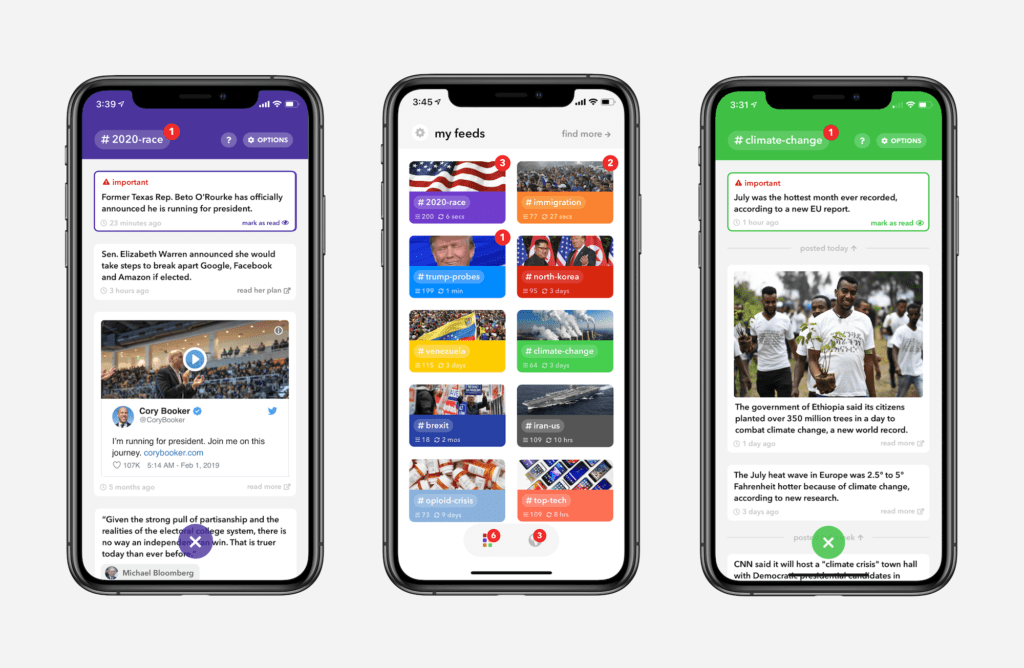|
Getting your Trinity Audio player ready...
|
Winno is an iOS app with a bold mission to “rebuild news from the ground up, for the internet era”. Released in September 2019 the app has already featured as Apple’s App of the Day and has been heralded as the future of news because it “shrinks news units into facts without opinions laced in”. WNIP caught up with Nick Rubin, CEO & Editor-in-Chief, and Daniel Lewis, Curator, to find out more…
Can you give us further background about your company?
Winno was founded in 2018 by myself, Nick Rubin, a Stanford undergrad, and I currently serve as Winno’s Editor-in-Chief. We’re based in San Francisco, and in the six months since launch we’ve grown rapidly. I must clarify that Winno is a consumer product that targets everyday news consumers (and not publishers, in its current form, at least).
What business problem is your company addressing?
Surveys show that a large majority of Americans feel overwhelmed by the news and the vast amount of information online. The endless ‘feed model’ of news aggregators and social media platforms fails to keep users informed and forces publishers to differentiate with sensational headlines and photos over quality content. We’re left to piece together stories and connect the dots ourselves.
Winno provides an antidote to information overload, updating people on the need-to-know developments to the stories that interest them. Winno rethinks the entire news experience, condensing articles to their core components and distributing them in an extraordinarily convenient way—no noise, just news.
What is your core product addressing this problem?
We’re an iOS app that provides curated feeds of updates for ongoing and breaking news stories. Users are able to follow feeds that interest them, with topics ranging from the coronavirus to impeachment, climate change and the opioid crisis. In each feed we post the facts – actual developments, not opinion, commentary or filler. Updates are more than just headlines: we condense the important components of a story into a digestible format fit for anyone. There’s no junk or clickbait, just what matters, including a link to a full article so users can dive deeper.

By shrinking the “unit” of news from article to fact, we can present primary sources and quotes without opinion mixed in. It lets us comprehensively cover a story in real-time and be clear, engaging and objective. And because our feeds are curated and finite, users can feel 100% up-to-date at the end of the day without needing to scroll endlessly through an aggregator or read through an entire newspaper.
Winno is a self-contained product – the only way to access our content is through our iOS app. Because of this, we don’t need to publish junk to drive clicks on third-party platforms. Our system works precisely because we don’t publish junk, focusing instead on developing user loyalty and creating the best resource for timely, relevant and truthful information.
Can you give some examples of other publishers using your solution?
Currently, Winno feeds are run exclusively by our editorial team. We are hoping to explore different ways in which local and national publications could use feeds to engage with their readership.
Pricing?
Winno is currently free to use. We are planning on testing a variety of monetization methods in the near future, none of which include third-party advertising.
What are other people doing in the space and why?
Winno is not an aggregator – we create and own our content. It is also not a conventional news outlet that publishes free-standing articles. By focusing on the product and experience first, Winno has found a unique middle ground.
With Winno, we recognize that the 600-word article is becoming a thing of the past. Audiences are looking for news to be immediate, concise, and curated, not the newsprint-length of old. Major news outlets like The New York Times, CNN and The Washington Post have also begun to understand this, relying more on “live coverage” features that display short posts in a similar timeline-like format. But these features have always remained ancillary to the core news product. With Winno, we recognize that this format is ideal for all ongoing stories, not just urgent breaking news—that if a reader can get the same information in two sentences that they traditionally would get in 200 words, they will choose the former.
Other startups like Circa and Sidewire tried “update” models similar to ours, but got mired in excessive coverage, large teams and unwanted features. At Winno, we pride ourselves on our simplicity, and our users love it.
How do you view the future?
The possibilities for Winno feeds are endless. In the immediate future, we plan to expand coverage to cities, sports teams, regions and a variety of other niche interests. Down the line, we expect to explore different “Substack”-like models of publishing for both individuals and publications. With the rise of newsletters, we think Winno can provide an even better model for direct-to-consumer micro-blogging than a long-form article in your inbox every day.
Thank you.


